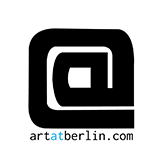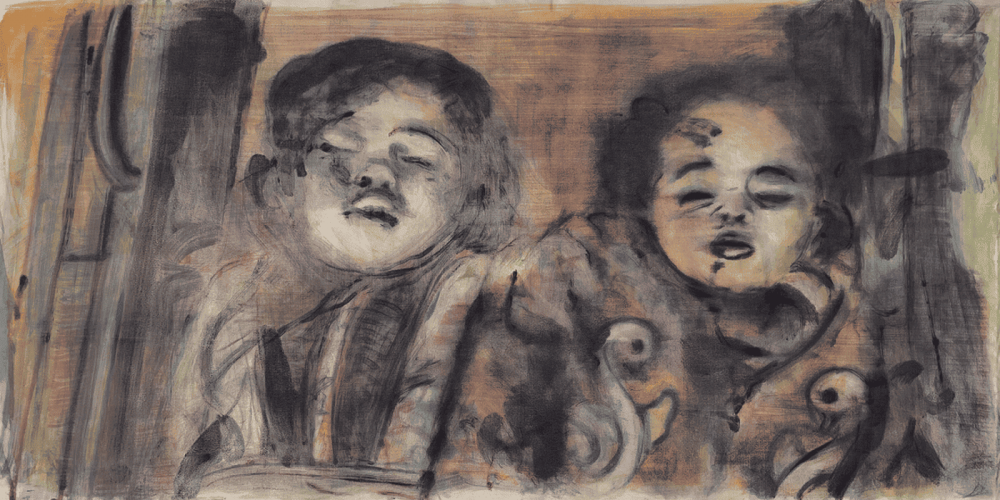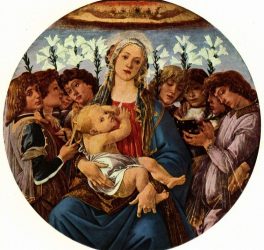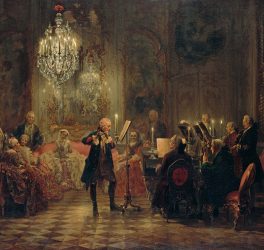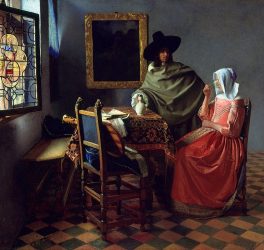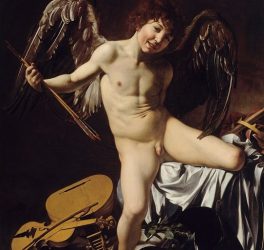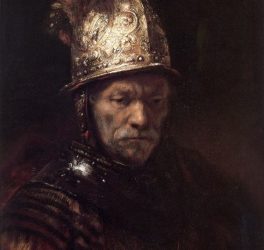until 24.10. | #4782ARTatBerlin | Verena Kerfin Gallery shows from Friday, 12 September 2025 the solo exhibition “GAZA, again” by the artist Ondrej Drescher.
Gaza – Art as Butterfly Research
In the self-conception of most contemporary artists, art has no essential relation to reality—let alone to the task Heiner Müller assigned to it: to make reality “impossible.” Müller did not wish to ignore reality, nor to beautify it, but to intervene deliberately in its ideological construction. To “make reality impossible” means to interrupt, distort, and confront it so profoundly that its supposed naturalness breaks apart—wresting it from the grip of dominant orders by rendering its prevailing images and narratives unusable for their original political ends. That is the essence of Müller’s concept of resistance: art must never collaborate with power; it must disrupt language and sabotage authority.
Today, however, many insiders are content with far lesser ambitions. They pontificate in detached clichés about their own economic relevance, call themselves Berlin’s “lifespenders,” and define their role, in all seriousness, as butterfly researchers of ideas: “It’s more like artists are blind butterfly researchers: they capture ideas that no one has yet been able to name.” Which ideas those might be, they of course refuse to specify; but in their certainty lies this promise: “Only later, when the phenomenon becomes tangible, do journalists, scholars, intellectuals, and political actors pick up the thread. Art was already there—as the forerunner into a space that others only enter later.” This self-satisfied madness can only end in a refusal to face reality—an insultingly obvious banality.
This delusion has spread like a virus. Education becomes secondary; interpretation—however vacuously intellectual—counts only insofar as it does not endanger the one decisive metric: economic success, the visible performance of “having made it.” Thus even the last stanza of Brecht’s Mack the Knife:
“For some are in darkness
And others in the light.
You see those in the light;
Those in the darkness, you do not.”
is no longer read as a radical indictment of violence or a critique of societies that reward those who walk over corpses—literal or moral. Instead, it is sentimentalized into something vague and human: “The poem expresses something human, a figure that becomes visible in the light, or remains invisible.” Here, not only does a misreading come to an end; it ushers in the seamless transition into intellect-free grandeur—self-defined by a Berlin artist of supposed “world class” in his own exhibition text.
It is therefore hardly surprising that a Berlin painter, untroubled by any real confrontation, paints himself every year on holiday in France as a suffering Christmas tree with a thousand drops of blood in a knitted sweater—a folkloric emblem of Weltschmerz born solely from the inability to perceive any concrete manifestation of reality—embraced in traditionally German self-absorption, even while his domestic factories simultaneously deliver drones and artillery shells abroad to manufacture an endless man-made blood rain.
The German art scene is not merely intellectually impoverished—it ostentatiously cultivates that poverty. It resembles pimps basking in glitz and bling-bling—not to signify substance, but to seduce, fully aware that in truth no one really needs them.
But there is another measure: Fernando Botero, in 2004, on a flight to Paris, read reports of torture and abuse by US soldiers in Abu Ghraib. He did not respond with metaphor or a decorative “aesthetic gesture,” but with real images. For a year, he drew and painted what he had seen and read. His aim: to burn these images irreversibly into the world’s memory—just as Picasso’s Guernica became the iconic symbol of aerial terror. Botero offered the complete Abu Ghraib series to US museums free of charge, but only on the condition of permanent exhibition. Initially rejected, the series later found a home at the University of California.
Not only does the society we live in suppress every renewal and reject any open dialogue—but the art world also submits willingly. Minds are surrendered at the entrance to the consumer paradise, churned out as disposable visual goods that no one needs. Artists paint scenes they claim were inspired by “sitting by the water and feeling at one with it.”
Meanwhile, in Gaza, thousands of children are buried beneath collapsing buildings destroyed by air bombardments—deliberate or random. Children are killed by snipers. Cars filled only with children are riddled with bullets for hours, even after the Palestine Red Crescent pleads for a ceasefire. The incoming images are drenched in a blood-red haze—yet people choke on the endless monologue of the trivial, posing as butterfly catchers and thinkers about light, preferably in a knitted sweater with more tear-shaped drops of blood than the Jesus in the village church of Kiss-My-Ass-Nowheresville ever had.
Anyone who, in the face of this reality, remains silent—or seeks refuge in harmless metaphors and theatrical gestures—has effectively exited the realm of art and entered a brutal degeneration that enables mass murder, rather than making that reality impossible.
(Text: Ondrej Drescher, Aug. 2025)
Opening: Friday, 12 September 2025, 5:00–9:00 pm
Exhibition dates: Saturday, 13 September – Friday, 24 October 2025
Image caption tile: Ondrej Drescher, 2 out of 16k Children Bombed to Death in Gaza, 2024, Öl auf Leinwand, 99 × 205 cm, 2024. (© Ondrej Drescher / Courtesy Verena Kerfin Gallery)
Exhibition GAZA, again – Verena Kerfin Gallery | Zeitgenössische Kunst in Berlin | Contemporary Art | Ausstellungen Berlin Galerien | ART at Berlin
